by Howard Fosdick © FolkFluteWorld.com

A Set of Recorders (Courtesy of TurnerSCO.com)
Schools everywhere use plastic recorders to introduce children to music.
They're easy to play, durable, washable, and can be purchased for the price of a lunch at McDonald's.
Yet recorders are professional musical instruments. Their range extends to two full octaves. They play all tones accurately, and they're tunable. Plus, they're versatile: they can play any musical style you prefer.
Recorders project a sweet, ethereal voice.
Wait... Really?
Depending on your early school experience, you might find that last statement hard to believe. There's nothing worse than a class of gradeschoolers squeaking away on their recorders!
Well then, then listen to how the instrument sounds in capable hands.
Or, recall how recorders sound in popular songs like Led Zeppelin’s Stairway To Heaven, the Rolling Stones’ Ruby Tuesday, or the Beatles’ The Fool On The Hill.
Convinced? This article tells you everything you need to know to get started with this remarkable instrument. If you already play, it will fill you in on what you need to know.
What's a Recorder?
There are hundreds of different kinds of flutes. Which are recorders?
First, musicians plays recorders vertically, rather than horizontally, like the metal concert flute.
Second, recorders feature a mouthpiece or fipple that directs the player's breath to a sharp edge. Splitting air on that edge, or labium, is what produces the sound waves.
This diagram shows how a fipple works, versus the open blow hole of a concert flute:
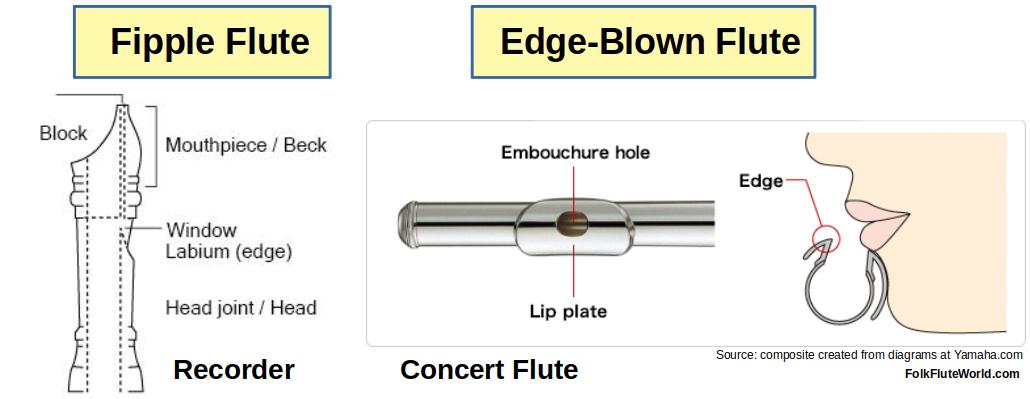
The fipple is a very useful invention. It makes it much easier to get started playing. All you have to do is blow.
In contrast, the concert flute only offers a lip plate. It's up to the player to properly direct his breath across the sharp edge. New flute players spend lots of time improving their embouchure before they master the entire scale.
One last defining characteristic: recorders have exactly seven holes on top and one underneath (for the lefthand thumb):
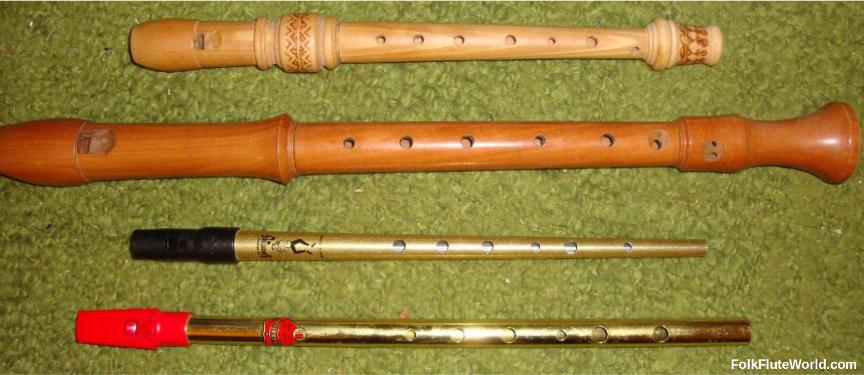
Two Recorders at Top -- Two Tin Whistles Below
Among the recorder's seven holes, one or two may actually be double-holes -- two little holes spaced very closely together.
The large recorder above has two sets of double holes. These are for playing sharps and flats. They count as a single hole for definitional purposes.
The recorder differs from the popular tin whistle -- also called a whistle or penny whistle. As the above photo shows, whistles have only 6 holes on top and no thumb holes beneath.
(Learn all about the tin whistle in my article Beginner's Guide to Tin Whistles).
History
The recorder dates back about as far as musical notation, some 700 years. It was quite a popular instrument in the 15th through the 18th centuries. In the Renaissance and Baroque periods, famous composers like Vivaldi and Bach wrote for the recorder.
By the late 18th century, the recorder's popularity plummeted. What ultimately sent it into obscurity was the desire for louder instruments that could be heard by audiences prior to electronic amplification. Metal instruments fulfilled this need. Mechanized concert flutes virtually exiled soft-voiced, keyless wood flutes like the recorder.
The 20th century saw a rival in the recorder's fortunes. The Dolmetsches in the United Kingdom, a father and son team, started making and teaching recorders. Peter Harlan of Germany recognized the recorder's cultural importance and invented a new fingering system. And Yoshitaka Sakamoto introduced the instrument to the far east in the 1930s.
In the 1940s, plastic recorders were first produced. They became widely popular by the 1970s.
Today the recorder occupies a central position in music education. It also fulfills a role in everything from Renaissance music recitals to modern ensembles. With its low price, high capabilities, and versatility, it's ideal for those who enjoy playing solo or in small groups.
Sizes and Pitch
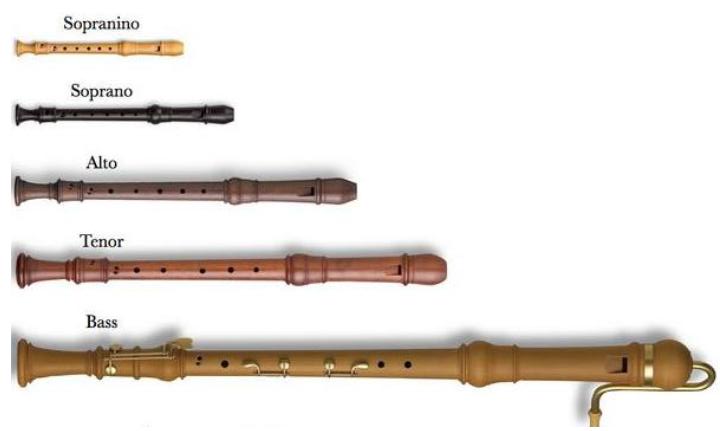
(Courtesy of EmmyHoney1@Pinterest)
This photo shows that recorders come in several standard sizes. The larger the instrument, the lower its voice. And the more costly it is.
The ubiquitous soprano recorder is tuned to the key of C. Its lowest note -- or base note -- is C5. That's one octave above "middle C" on the piano.
The tenor is pitched one octave lower than the soprano. That's right at middle C.
These charts show the keys of the most common members of the recorder family, and their base pitches:
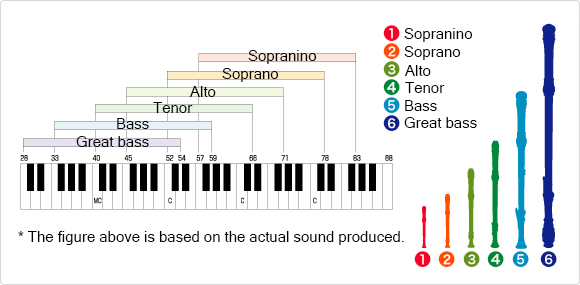
(Courtesy of Yamaha.com)
| Lowest Note: | Also Called: | |
| Garklein | C6 | Sopranissimo |
| Sopranino | F5 | |
| Soprano | C5 | Descant |
| Alto | F4 | Treble |
| Tenor | C4 | |
| Bass | F3 | Basset |
| Great Bass | C3 |
Materials
Recorders typically come in two materials: ABS high-quality plastic and wood.
High-quality instrumental plastic offers superior price/performance because molds produce instruments with perfect accuracy every time. In contrast, wood recorders require a bit of human finishing. The result is that an inexpensive plastic recorder is nearly always better than an inexpensive wood one.
Wood recorders preserve the instrument's tradition. Many feel wood presents a slightly softer, warmer tone than plastic. Yet good wood recorders are costly, and plastic offers reliabilty and durability for lower cost. Hence, you'll see that many players buy plastic instruments, while serious musicians opt for expensive wood instruments.
The most popular woods for the less expensive wood recorders are soft woods like pearwood and maple. Primo recorders come in exotic hardwoods like ebony, grenadilla, or rosewood.
While experts debate about various woods, for most of us amateurs, a high quality plastic instrument makes more sense.
Range and Fingering
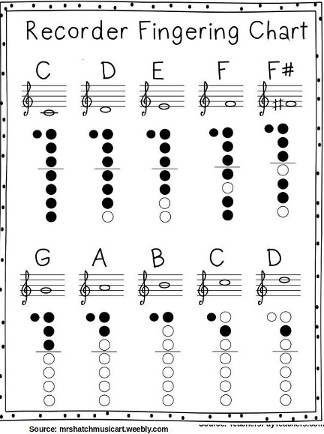
(Courtesy of MrsHatchMusicArt.Weebly.com)
Recorders can play two full octaves, plus all sharps and flats between.
This partial fingering chart shows that it's easy to finger the scale. Recorders feature linear fingering. You just progressively lift up your fingers to play up the scale.
The chart shows the predominant fingering system, called Baroque (or English). The alternative fingering system is German.
Baroque and German fingerings differ only for the fingering of the note of F and three sharps. In the U.S., baroque overwhelmingly predominates. Experts recommend baroque for your first recorder.
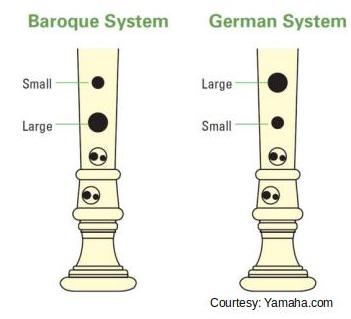
You can tell a baroque versus a German fingered recorder by looking at the sizes of the bottom fingering holes, as this picture shows.
Caring for Your Recorder
Recorders consist of either two or or three pieces.
You tune the instrument by moving the mouthpiece in or out. To lower its pitch, pull out the mouthpiece. To raise it, push it in.
You clean the instrument by taking it apart. A few cheap plastic recorders are one-piece. (As is the somewhat rare, tiny garklein recorder.)

Your breath produces moisture that collects inside the instrument during play.
So after every playing session, take the recorder apart, and swipe the inside with a recorder swab to remove excess moisture. Or you can use a cleaning rod with attached cloth.
Most instruments come with a swab when you purchase them, but sometimes you'll have to buy one separately. Be sure to buy one for your size of recorder!
If you play for an extended session, your recorder might wet out. It starts to sound muffled or muted or the notes aren't stable. Simply open up your instrument and swab it out. It also helps to give a hard blow on the detached mouthpiece to blow out any moisture in there. Removing the moisture will allow you to continue playing.
Wood recorders need special attention. Always follow the manufacturer's care instructions. Some will tell you to oil your wood recorder, while others will not. Most will urge you to "break in" any new wood recorder gently, by limiting the length of your playing sessions until the instrument has become adjusted to play. (Find more detail on oiling and other maintenance tasks in my article How to Fix and Maintain Recorders -- The Complete Guide).
Take care not to expose any recorder to extremes of temperature. Leaving it inside your car window on a hot day, for example, could permanently damage it.
Or if you bring it inside on a very cold day, warm it up first before you play it. If it's wood,you might crack it otherwise.
Don't share any wood instrument with others. Medical research has shown that harmful microbes can survive inside them even if they haven't been played for some time. Share a recorder with someone, and you share their germs.
Buying Your First Recorder
Which should you buy for your first recorder?
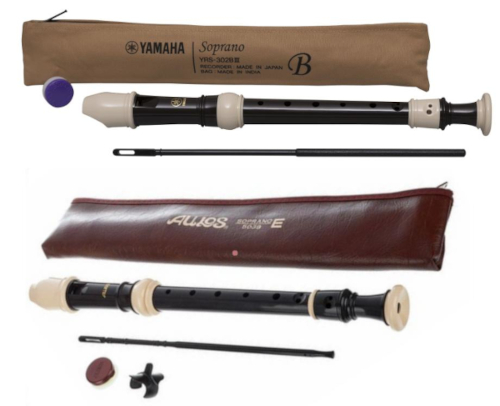
(Courtesy: the vendors)
First off, choose plastic. It's way less expensive. Plus, it's durable and sounds great. And it requires less care and maintenance.
Secondly, choose baroque fingering. It's much more common and the experts recommend it.
Thirdly, start with the ubiquitous soprano. Lessons all address the soprano. Plus it's in the key of C, so tons of free sheet music are available online.
Which brand? Any decent recorder could work for you.
I suggest either a Yamaha or Aulos plastic soprano. These instruments are highly popular, maintain consistent quality, and have strong clear voices. A 300 series Yamaha or an Aulos Symphony or Robin series would be a great choice. These clock in at about $20 to $35 USD retail. With proper care, they'll last a lifetime.
Stay away from the cheap $10 to $20 recorders made for schoolchildren. They often have tuning issues.
Once you develop some proficiency with your recorder, you might later opt for a wood instrument. Or maybe you'll go for the mellifluous, lower-pitched alto, or the lovely soft voice of the tenor.
But start with a quality plastic soprano. That way you can get your feet wet at minimal cost.
By the way, all recorders finger the same (very nearly). So once you learn the soprano, you can play any of the others.
Learning to Play
There are tons of free resources on the internet to help you learn to play your new instrument. There's absolutely no need for a teacher or paid lessons unless you prefer that learning style.
Here are a few of the free resources you can access on this website:
Click here for our list of free self-taught online courses and other community resources.
Click here to find lots of free instructional material over at Youtube.
Click here to access a ton of freely downloadable sheet music.
Click here for many other free resources.
Recorders are Great!
Groups of schoolchildren squeaking away on their recorders give this instrument a poor reputation. It's entirely undeserved. A well-played recorder sounds like a dream, and it has the same professional capabilites as any other musical instrument.
The recorder can play any style of music. It's durable, portable, and inexpensive.
Best of all, this is an easy instrument to learn and grow with. You'll enjoy it for a lifetime.
This article has told you everything you need to get started with this amazing instrument.
Related Articles
You may be interested in my related articles:
* Beginner's Guide to Tenor Recorder
* Ultimate Guide to Bass Recorder
* Are Adler Recorders Any Good?
* How to Fix and Maintain Your Recorder - A Complete Guide
Gallery

(Courtesy of dawaseur.hatenablog.com)

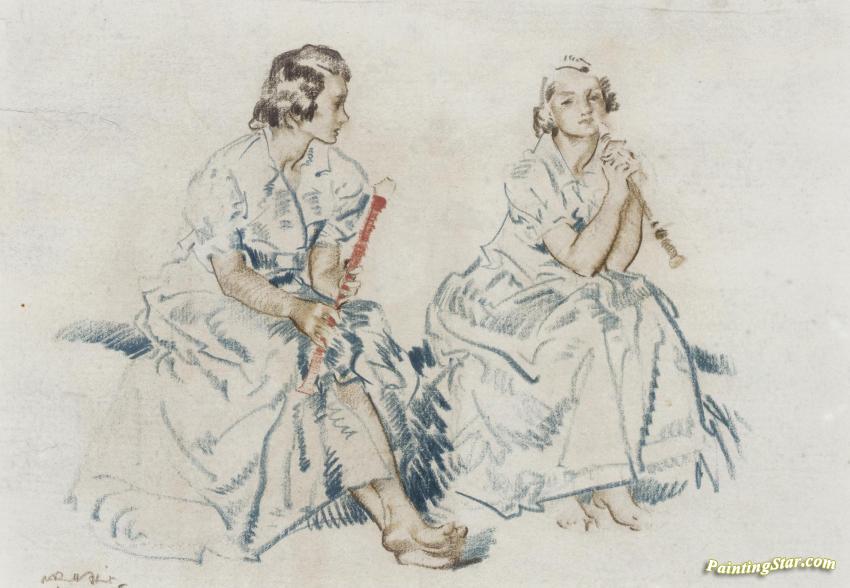
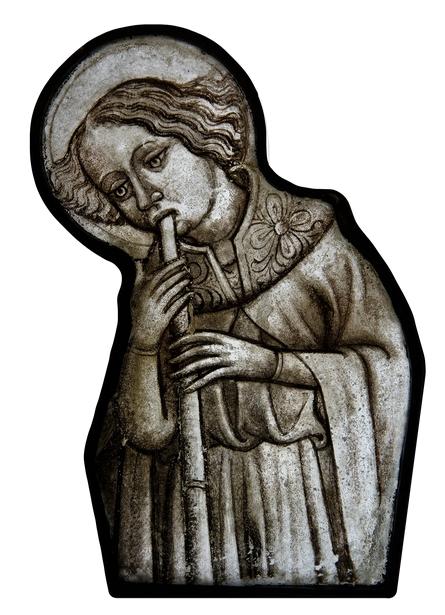
Duchy of Berry, France,
circa 1410 (Courtesy of SamFogg.com)


by Will Powell Frith
(Courtesy of Antieke Tegels De Duif @Pinterest)